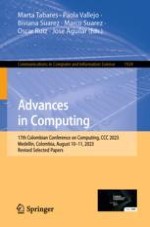This book constitutes revised selected papers from the refereed proceedings of the 17th Colombian Conference on Computing on Advances in Computing, CCC 2023, held in Medellin, Colombia, during August 10–11, 2023.
The 22 full papers and 11 short papers included in this book were carefully reviewed and selected from 68 submissions. They were organized in topical sections as follows: Industrial Applications - Industry 4.0 - Precision Agriculture, Artificial Intelligence, Distributed systems and large-scale computing, Computational Statistics, Digital Learning - E-learning, Software Engineering, Human Machine Interaction, Image processing and Computer Vision, Robotics in Industry 4.0 and Scientific Applications.
